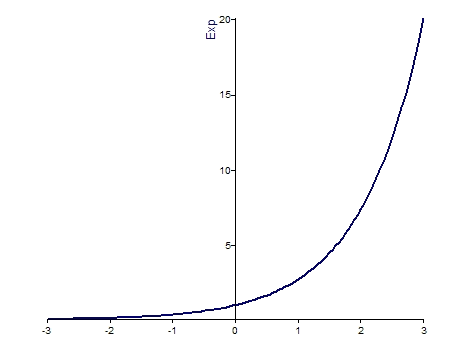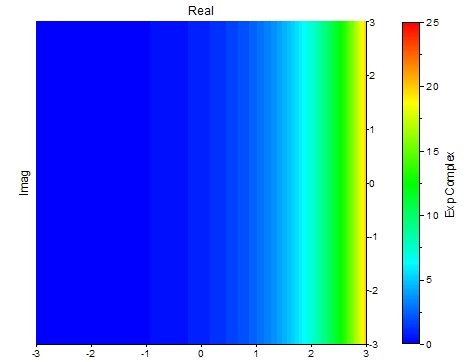Raises e to the power of the specified exponent.
Syntax
Exp(Exponent)
The syntax of the Exp function consists of the following parts:
Part |
Description |
|---|---|
Exponent |
The exponent with which e is to be raised. All data structures are allowed. All numeric data types are permitted, except Calendar time and Time span. |
Remarks
The result has the same structure as the argument Exponent. The calculation is done element by element where appropriate.
The result has the unit 1, if Exponent has a unit. Otherwise, it has no unit.
The real exponential function is calculated for a real argument. The result then has the 64-bit floating point value data type. The following illustration shows the course of the function:

If Exponent is complex, then the complex exponential function is calculated. The result then has the complex 64-bit floating point value data type. The following illustration shows the course of the absolute value of the function:

If the argument is a list, then the function is executed for each element of the list and the result is also a list.
Available in
FlexPro Basic, Professional, Developer Suite
Examples
Exp(1.) |
Results in 2.718282. This corresponds to the Euler's number e. |
Exp(-1.) |
Results in 1/E. This corresponds to the inverse of Euler's number e. |
Dim x |
Calculates a signal with the course of the curve in the interval [-3, 3]. |